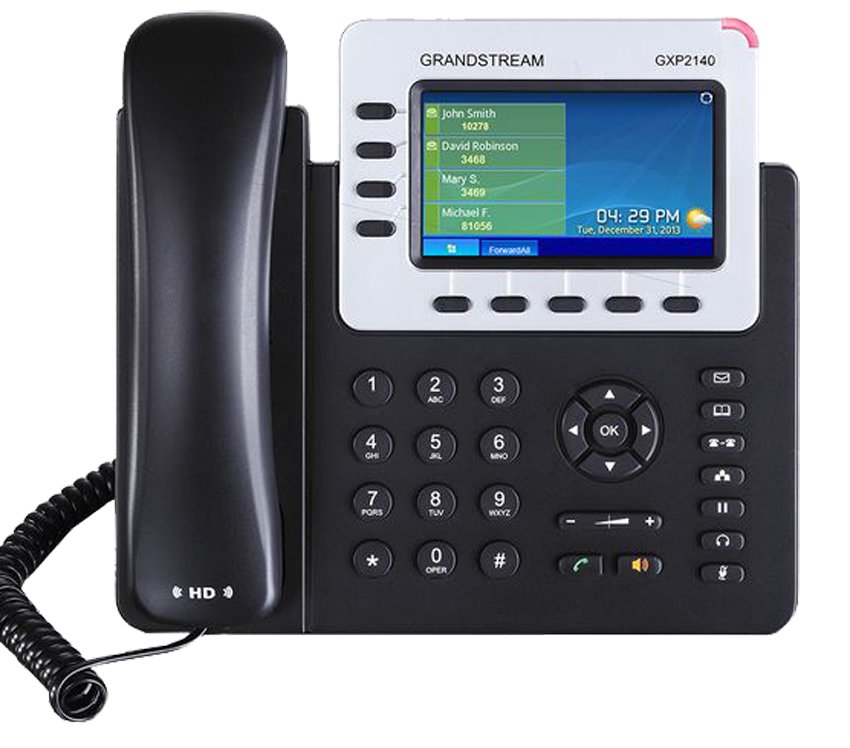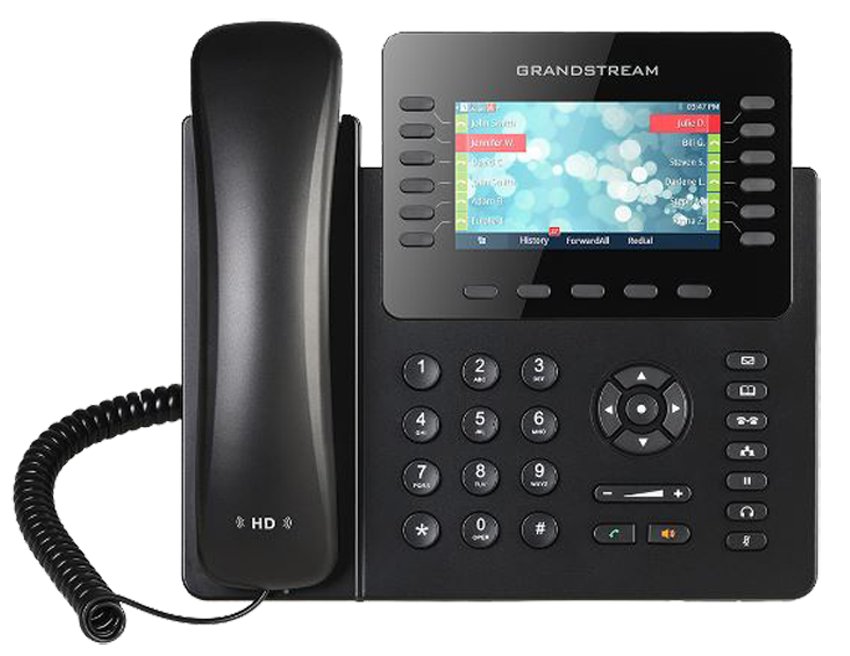In an era where communication agility is no longer optional but essential, how can organizations harness customizable telephony solutions to stay competitive? Grandstream’s innovative devices, from carrier-grade IP phones to cloud-managed platforms like GDMS, exemplify a strategic shift towards flexible, scalable communication networks. Transitioning from traditional landlines to IP and cloud-based systems, businesses now enjoy seamless integration, remote management, and rapid deployment—yet challenges like security and regional compliance persist. What does the future hold as AI-driven features, smarter management tools, and enhanced security become standard? This evolving landscape promises smarter, more intuitive systems that adapt to growing organizational needs, transforming how companies connect internally and with customers. Embracing these technologies not only boosts responsiveness and efficiency but also requires foresight into ongoing innovation and adaptation—are you ready to navigate this dynamic, digital-first future?
Enhance Your Business Communication with FiberConX’s Advanced VoIP Solutions
Looking for reliable Business Phones in Canada? FiberConX Communications specializes in top-tier VoIP and IP business phone services tailored to meet your company’s needs. Our solutions feature advanced features such as voicemail, IVR, ring groups, and voicemail-to-mail, ensuring seamless and professional communication with your clients. Whether you’re a small business or a large enterprise, FiberConX provides scalable, crystal-clear voice services designed to enhance productivity and customer satisfaction. Reach out to our expert team at Sales@FiberConX.com or call 1.416.945.9210 to learn more about how our Business Phones can transform your business communications in Canada.

Harnessing Flexibility: Transforming Business Communication with Customizable Telephony
In today’s fast-moving business landscape, flexible communication systems are no longer a luxury—they’re essential. Companies need tools that can adapt quickly to growth, changing workflows, or new customer expectations. Rigid, traditional phone setups often become bottlenecks, limiting responsiveness and scalability. That’s where customizable telephony solutions come in, offering the agility organizations require to stay competitive and meet evolving demands.
These systems are designed to be tailored specifically to a company’s unique needs. Whether supporting remote teams, integrating with digital platforms, or scaling seamlessly as the business expands, they provide the flexibility that static setups simply can’t match. Instead of relying on fixed hardware or limited features, modern telephony allows easy adjustments—adding users, modifying configurations, or deploying new features—without costly overhauls. This adaptability keeps communication infrastructure aligned with strategic growth.
Cloud management platforms, like Grandstream’s GDMS, simplify deployment and ongoing management. Through a centralized interface, administrators can configure, update, and troubleshoot devices across multiple locations remotely. This not only saves time but also reduces errors, ensuring all parts of the network operate smoothly. Whether managing dispersed offices or remote workforces, this level of control makes maintaining a reliable, responsive communication system straightforward.
Choosing the right devices plays a crucial role in creating a personalized communication environment. Grandstream’s IP phones, ranging from sleek, everyday models to advanced units with video and touchscreen features, integrate effortlessly with cloud platforms. This seamless integration makes scaling and customizing your setup easier than ever, supporting diverse roles and workflows within your organization. The result is a cohesive, efficient network that enhances user experience and operational efficiency.
Implementing these solutions isn’t just about technology—it’s a strategic move. A thoughtful assessment of your organization’s specific communication needs guides the selection of devices and configurations. With management tools like GDMS, setup and maintenance become streamlined, enabling your team to focus on core tasks rather than technical hurdles. This proactive approach ensures your communication infrastructure remains agile, resilient, and ready to support future growth.
Embracing customizable telephony solutions unlocks new levels of agility and productivity. They allow your organization to respond faster to market changes, improve internal collaboration, and deliver better customer service—all while maintaining control over your communication environment. This flexibility isn’t just a feature; it’s a vital component of modern business strategy, shaping how companies connect, adapt, and thrive in an increasingly digital world.
From Analog to IP: The Evolution of Telephony Technologies Shaping Modern Communications
Telephony has come a long way since its inception, evolving from simple analog landlines into the sophisticated digital and IP-based systems we rely on today. The earliest telephony setups used copper wires to connect fixed locations, providing basic voice communication without room for much customization or growth. These systems were dependable but inflexible, often requiring significant infrastructure investments and offering limited scalability for expanding businesses.
The shift to digital telephony marked a significant milestone. Digital systems introduced features like voicemail, call forwarding, and conference calling, transforming internal and external communication. However, these early digital options still depended heavily on proprietary hardware, which limited flexibility and made upgrades costly and complex. For growing organizations, this meant their communication infrastructure couldn’t keep pace with their expansion, creating bottlenecks and inefficiencies.
The real game-changer arrived with the rise of IP (Internet Protocol) telephony. Moving voice traffic onto the internet significantly lowered costs and unlocked new capabilities. IP systems enabled integration with other digital services like instant messaging, video conferencing, and unified communication platforms, making workflows more seamless. Remote work became more feasible as employees could connect from anywhere with an internet connection, breaking down geographical barriers and expanding business reach.
This transition to IP telephony also paved the way for cloud-based solutions. Cloud platforms allow administrators to configure, manage, and troubleshoot systems remotely, eliminating the need for on-site hardware adjustments. Devices like Grandstream’s IP phones are designed for easy deployment and management, supporting rapid scaling and flexible configurations. These innovations have made telephony more adaptable, supporting the evolving needs of modern, dynamic organizations.
Alongside these technological advancements, management systems such as GDMS emerged, offering centralized control over devices across multiple locations. This simplifies mass deployment, streamlines maintenance, and ensures consistent performance and security. As a result, businesses can expand their communication networks quickly and efficiently, without overhauling existing infrastructure or sacrificing reliability.
Looking back, each innovation—from analog to digital, then to IP and cloud-based systems—has driven the industry toward greater flexibility and customization. These developments reflect a clear trend: moving away from rigid, hardware-dependent setups toward dynamic platforms that support today’s fast-paced, digital-first world. This ongoing evolution continues to shape the future of telephony, opening new possibilities for smarter, more responsive communication solutions.

Navigating Today’s Telephony Landscape: Embracing Diversity and Innovation
Today’s telephony landscape is more diverse and dynamic than ever, blending traditional voice systems with a broad array of digital and cloud-based solutions. Businesses now have the flexibility to choose from classic landlines, VoIP platforms, unified communication tools, and mobile-enabled devices, allowing them to craft communication setups tailored precisely to their operational needs. This variety ensures that organizations aren’t forced into a one-size-fits-all model but can select the right mix to support their size, industry, and workflow demands.
Cloud-managed telephony leads this evolution, offering the convenience of remote configuration, real-time updates, and centralized management. With these tools, companies can easily add users, update features, or troubleshoot issues from anywhere, supporting remote work and dispersed teams. This flexibility keeps communication seamless and responsive, no matter where employees are located, boosting overall efficiency and responsiveness.
Technologies like Quality of Service (QoS), bandwidth management, and security protocols play vital roles in ensuring clear, reliable communication. They prioritize voice traffic, prevent disruptions, and safeguard sensitive data across networks. As reliance on internet-based communication increases, investing in these network optimization tools becomes essential to maintain high call quality and organizational security, especially in complex or high-demand environments.
Regional infrastructure and organizational culture heavily influence telephony choices. In regions with advanced digital infrastructure, cloud and VoIP solutions are predominant due to their scalability and ease of integration. Conversely, areas with limited internet access or stricter regulations may still depend on traditional landlines or hybrid systems. Meanwhile, some organizations favor mobile-first or informal communication channels, reflecting diverse operational priorities and cultural preferences.
Despite remarkable progress, challenges persist. Security concerns around cloud systems require ongoing investment in encryption and threat detection. Compatibility issues can arise when integrating new digital solutions with legacy systems, demanding careful planning. As systems grow more feature-rich, user training and change management become increasingly important to ensure smooth adoption and effective use.
Regulatory differences also add complexity. Data privacy laws, security standards, and lawful interception requirements vary by region, shaping system design and deployment. For example, GDPR compliance in Europe imposes strict data handling practices, influencing how telephony providers manage user information and security measures. Navigating these legal landscapes is crucial for maintaining trust and avoiding legal pitfalls.
Overall, today’s telephony environment offers a broad spectrum of options driven by rapid technological innovation and regional diversity. Selecting solutions that align with specific needs enables organizations to build reliable, secure, and adaptable communication systems. Embracing this technological diversity empowers businesses to stay connected, competitive, and ready for future advancements in the digital age.
As organizations continue to adapt to this evolving landscape, staying informed about the latest developments is essential. For more insights into innovative telephony solutions, you can explore our comprehensive guide on telephony solutions that help businesses optimize their communication infrastructure.
Putting Theory into Action: Deploying and Benefiting from Customizable Telephony Solutions
Implementing customizable telephony solutions starts with a clear understanding of your organization’s unique communication needs. By assessing call volume, remote working requirements, user roles, and desired features, you can design a system that genuinely supports your daily operations. This targeted approach ensures that deployment is efficient and that the system delivers tangible improvements in productivity and responsiveness from the outset.
Tools like Grandstream’s GDMS make this process straightforward. A centralized platform allows administrators to configure, provision, and monitor devices across multiple locations with just a few clicks. Remote management reduces the need for on-site interventions, accelerates setup, and minimizes errors—especially valuable for dispersed or hybrid teams. Consistent oversight keeps your network running smoothly and simplifies ongoing maintenance.
Once your devices are in place, integrating them into everyday workflows maximizes their value. For example, sales teams benefit from quick dial buttons and personalized contact directories, while support staff leverage video conferencing and call transfer features to enhance service quality. Proper onboarding and training ensure staff can use these tools effectively, translating into faster response times and more seamless collaboration.
Scalability is another key advantage. As your organization grows or shifts focus, adding new users or features becomes a matter of provisioning additional devices or updating software—without disrupting existing operations. Devices like Grandstream’s IP phones are designed for mass deployment and easy management, enabling your communication infrastructure to expand alongside your business needs without costly overhauls.
Effective management tools such as GDMS are vital for maintaining system health and flexibility. They facilitate remote configuration, real-time troubleshooting, and security updates across all locations, reducing downtime and ensuring consistent performance. Regular oversight allows you to adapt quickly to new demands, keeping your communication environment resilient and future-ready.
Finally, strategic planning and continuous improvement transform technology into a competitive advantage. Gathering user feedback, monitoring system performance, and staying current with new features help refine your setup over time. This proactive approach ensures your telephony system remains aligned with evolving business goals, supporting growth, enhancing customer interactions, and enabling you to respond swiftly to changing market conditions.

Future Horizons: Advancing Telephony with AI, Cloud Innovation, and Enhanced Security
Looking ahead, the future of customizable telephony is set to become even more innovative and user-focused. Advances in artificial intelligence will enable smarter systems capable of automatic call routing, voice recognition, and personalized experiences that adapt to individual preferences. These enhancements will streamline communication, reduce wait times, and boost overall efficiency, transforming the way organizations connect internally and with clients.
Cloud-based management platforms will continue to evolve, offering more intuitive interfaces and simpler deployment processes. This will make it easier for businesses of all sizes to stay agile in a fast-changing environment, ensuring their communication infrastructure can grow and adapt without disruption. As remote and hybrid work models become the norm, flexible, scalable solutions will be essential, supporting seamless integration across devices and locations to keep teams connected and productive.
Security and compliance will remain at the forefront of telephony innovation. Future solutions will incorporate advanced encryption, threat detection, and compliance features tailored to regional standards. This focus will help organizations safeguard sensitive data, build trust with customers, and avoid legal complications, regardless of where they operate. Device management will become more automated and intelligent, utilizing IoT and AI insights to provide real-time performance monitoring, proactive maintenance, and resource optimization.
Voice-activated interfaces and AI-driven personal assistants are poised to redefine daily communication. These tools will offer natural, intuitive interactions, helping users manage workflows, schedule calls, and access information effortlessly. This evolution will make communication not only more efficient but also more human-centric, enhancing user experience and engagement.
As technology advances, the core principles of flexibility, security, and user-centric design will continue to guide telephony development. Solutions will be tailored to meet the unique operational needs of different industries and organizational sizes, ensuring that customization doesn’t come at the expense of simplicity. Investing in these future-proof systems now positions organizations to remain competitive, resilient, and ready to seize new opportunities in an increasingly connected world.







